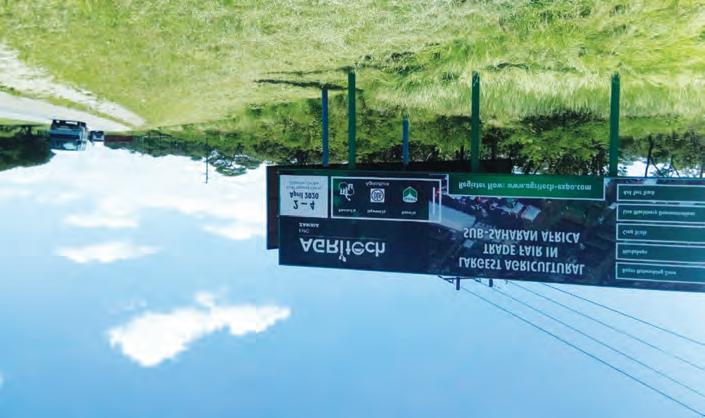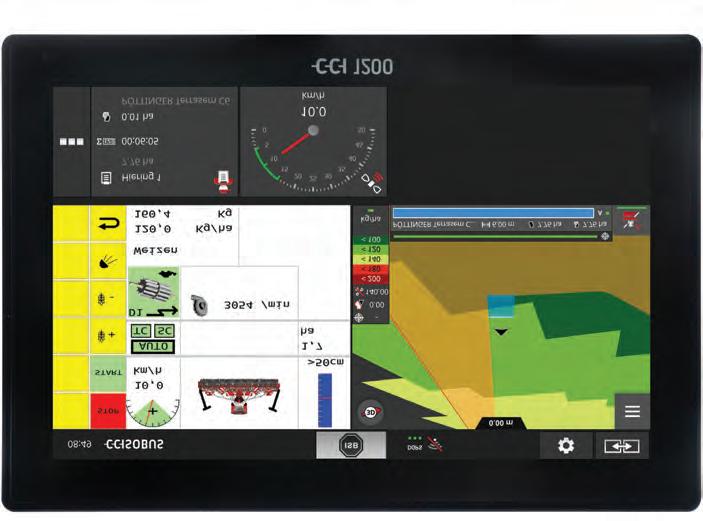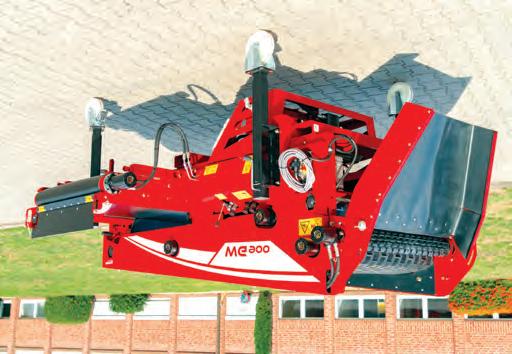
10 minute read
Events
The organisers elaborate on their mission for the Agritech Expo Zambia which was postponed two weeks before the event was scheduled to take place.
Delivering high standards in events and exhibitions
The AgriTech Expo team in the field. Wayne Krull, Operations Director, Christopher Armstrong, Marketing Manager, Simunji and Zulu from the GART team of agronomists, Rae Ferguson from Rooney’s Supply.
ON 16 MARCH 2020, exactly 15 days before the seventh edition of the AgriTech Expo in Zambia was to kick-off at the GART Research Centre in Chisamba, Zambia, the organisers, the local representation of the German Agricultural Society (DLG Agriculture Limited) and Zambian National Farmers’ Union (ZNFU) received an official communication from the Ministry of Health of the Republic of Zambia to postpone the event.
The week before this official announcement was received by the organisers, the outbreak of the new coronavirus (SARSCoV-2) was given the status of a pandemic by the World Health Organisation (WHO). This resulted in a number of countries putting in to effect many precautionary measures such as closing of borders, nation wide lockdowns as well as cancellation or postponement of large gatherings to combat the spread of the virus.
In 2019, the sixth edition of AgriTech Expo Zambia hosted more than 18,000 visitors, 300 exhibitors and seven international pavilions from the Czech Republic, European Union, Italy, China, Sweden, Finland, Germany and the United Kingdom.
Therefore, it was clear to the organisers as soon as the situation started to deterio
rate and the official communication was received from the government of Zambia, that the exhibition had to be postponed without any question. As with all event organisers who have had to deal with this situation, the safety and wellbeing of all the stakeholders is of paramount importance.
Preparations for event One of the most popular features of the AgriTech Expo Zambia is the crop trial area. In 2019, 26 companies demonstrated their seeds, chemicals and fertilisers on their designated trial crop plots. For this to work seamlessly, exhibitors, organisers along with the agronomists at the host venue of
AgriTech Expo Zambia, the GART Research Centre, have to work on tight planting, irrigation and maintenance schedules for a period of five months before the exhibition is to take place.
Field preparation is one of the most critical operations for a show like AgriTech Expo Zambia. It requires meticulous planning, preparation and coordination and it is highly rewarding when everything comes to fruition, to see 70,000 square meters of land ready to receive visitors and delegates the day before the event is to take place.
As can be imagined, there are many commercial impacts when an event has to be postponed due to unforeseen circumstances. In the case of AgriTech Expo Zambia, the ability not to exhibit the 30,000 square metres of trial crop plots with perfectly grown crops is one that has had a financial as well as an emotional impact.
The objective now in the mind of the organisers is to look to the future and gear up to deliver an impactful high quality event as well as reduce the financial impact to exhibitors, sponsors and supporters of the exhibition.
The first step for the organisers is to agree on the new dates for the event with all the officials and concerned stakeholders. Following that the organisers look to maintain the quality of the various popular features of the show, such as the Bayer Networking Zone and High Level Panel Discussion which aims to bring about a more inclusive agricultural policy making process in the country where the farmer's voice is taken into consideration. The Bayer Networking Zone follows the high level panel discussion, where the key topics discussed can be taken in to a more casual setting with the leading policy
Billboards for Agritech Expo placed at high footfall locations to attract visitors now obsolete due to the postponement of the exhibition.

makers, top commercial farmers, suppliers and distributors of the latest technology and innovation in farming, media and other critical stakeholders with the aim to take the next steps in shaping the future of farming in the region.
In addition to that, the organisers look to ensure the participation of as many international exhibitors through the country pavilions which was at high risk due the coronavirus outbreak.
The organisers will refine the content of the free to attend workshops for farmers. Content will be tailored to the region and customised to topics such as agri-finance and affordable technology that have been impacted due to the economic impacts of the coronavirus outbreak. The organisers will use the additional time to curate new features to add to the exhibition to engage the attendees. Some of these include livestock and future affordable technologies in agriculture.
Finally, the organisers look to engage and secure the participation and support of all the exhibitors, sponsors and visitors to guarantee a lucrative business networking platform which AgriTech Expo Zambia has built a reputation to deliver over the past years.
About Agritech AgriTech Expo Zambia is the business-tobusiness buying platform for agricultural professionals, from small-scale farmers to commercial enterprises, to engage and conduct business with some of the world’s leading suppliers to the agricultural industry. It is presented by the Zambian National Farmers Union and hosted by Golden Valley Research Trust (GART). The organisers, DLG Agriculture, offers international expertise in setting up trade fairs and providing project management and consultancy services.
The organisers will be announcing the new dates for AgriTech Expo Zambia soon. h

Biogas technology has proved to be instrumental in transforming lives by producing clean energy from waste.
Improving lives with biogas
THE VAST MAJORITY of sub-Saharan Africa is experiencing an energy crisis, living without clean fuels and technologies for cooking. As a result, four million deaths are caused each year due to indoor air pollution from cooking with inefficient, polluting and harmful fuels, according to the World Health Organisation. Each year, millions of cubic metres of wood from forests are lost due to unsustainable charcoal and wood fuel use, which is a major contributor to the deforestation rate and climate change. Offgrid communities are in dire need of a clean cooking solution.
Innovations for a better life Combining waste management with making available clean and affordable fuel to the masses, HomeBiogas has introduced small-scale, off-grid systems that offer a comprehensive solution for waste management, renewable energy creation, cleancooking, natural liquid fertilisers and sanitation for households and farms in periurban and rural areas.
The HomeBiogas systems are the most efficient and user-friendly small-scale biodigesters available. While being safe and easy to use, it is affordable as well -- improving livelihoods and saving money, while helping to fight deforestation and climate change. Company Vision and Success HomeBiogas were established in 2012 with an aim of reducing organic waste, to transition to clean and renewable energy sources, and improve living conditions for the millions of families who are still cooking with unclean fuels. Distributors and aid organisations around the world have joined HomeBiogas in raising awareness about the benefits of biogas technology.

An illustration of HomeBiogas 2.0
Together HomeBiogas has proudly provided thousands systems to families and farmers in more than 106 countries and aims to continue to help in establishing biogas in the Zambian market.
BioGas in Zambia Over the years, Zambia has faced an ever growing energy crisis and is especially feeling pressure in the agricultural sector. Losing nearly 250,000 hectares of natural forests every year for charcoal and with climate change being an ever increasing threat to daily lives, a renewable source for cooking and heating is a priority.
With the help of HomeBiogas, EcoGas is working to help change minds and encourage usage of renewable sources for cooking and heating.
Ecogas, in conjunction with Homebiogas helps create tailor-made solutions for small, mid and large-scale farmers with a mix of livestock farming systems. The energy can be used for multiple uses on the farm such as warming newborn piglets and chicks, sterilising dairy equipment and mechanisation power of small-scale milking equipment and for chilling milk. h
Pöttinger’s CCI 1200 ISOBUS terminal set to ease field operation
PÖTTINGER HAS LAUNCHED the CCI 1200 ISOBUS terminal, with an aim to monitor site-specific recording of all field operations with greater efficiency.
The CCI 1200 ISOBUS terminal aims to enable professional operation of all ISOBUScompatible machines including NOVAC A T X8 and A10 mowers, TOP 1252 C rake, FARO, EUROPROFI, TORRO, JUMBO and JUMBO COMBILINE loader wagons.
The new 12-inch CCI 1200 ISOBUS terminal is set to provide the user with a comprehensive function package. It has a touchscreen and the user can use it as a tablet.
According to Pöttinger, the menu system is straightforward and a few taps of the screen are needed. The integrated light sensor automatically adjusts the brightness of the display so that it is easy to read in direct sunlight or at night.
The flexible screen layout helps to position the display either horizontally or vertically. Several applications can be displayed simultaneously in different sized windows, thus enabling a seed drill with several metering units to be monitored easily and conveniently in a large format.
A camera image can be displayed alongside the machine data. For example, the user can keep an eye on unloading in the clamp or the wrapping sequence on a baler/wrapper combination. The terminal is equipped with a help system
CCI 1200 with seed complete.
that enables the user to find out more about applications that are open.
Pöttinger's precision farming packages include: Variable Rate Control: Site-specific application of seed/fertiliser, taking the site soil conditions into consideration Section Control: Automatic switching of the whole or partial working width during operation supported by GPS
Image Credit: Pottinger

Documentation: Site-specific recording of all field data during operation. For documentation purposes, this data can be imported into field indexing software as standardised ISO-XML files Agrirouter connection: Wireless manufacturer-independent data transmission from the terminal directly to field indexing software in the office and vice-versa Multi Boom: Independent control of all the different functions on a machine.
GRIMME, DAMME (GERMANY)-BASED agricultural machinery manufacturer, has launched the new web grader WG 900. Increasing crop protection with GRIMME WG 900
Effective grading surface GRIMME’s WG 900 is set to increase the effective grading area by 15 per cent compared to the previous model. However, the overall length of the grading web has remained the same, so that the available grading webs of the previous model can be used. In addition, the drop step from the grading web onto the grading cross conveyor could be reduced by 60mm.
Reducing downtime The QuickConnect system aims to reduce downtime by up to 70 per cent compared to conventional web-joiners. Thus grading webs can be adapted to the desired tuber size more quickly and easily.
To join the two ends of the grading web, the hook elements are clicked onto the connecting rod. To open, the quick-change system can be disconnected by hand.
Increasing crop protection Due to a permanent contact between the redesigned eccentric agitator and the rubber fabric grading web, a uniform undulating web movement is generated, which contributes to a significant improvement of the grading performance. Furthermore, the
The new web grader WG 900 in modern design.

continuous contact of the eccentric agitator gently lifts any wedged crop out of the meshes.
Integration into the storing line The new 800mm wide grading cross conveyor enables the sorted crop to be transferred to subsequent conveyor belts without any bottleneck. For an easier integration into the storing line, the machine can optionally be equipped with a heightadjustable chassis.






